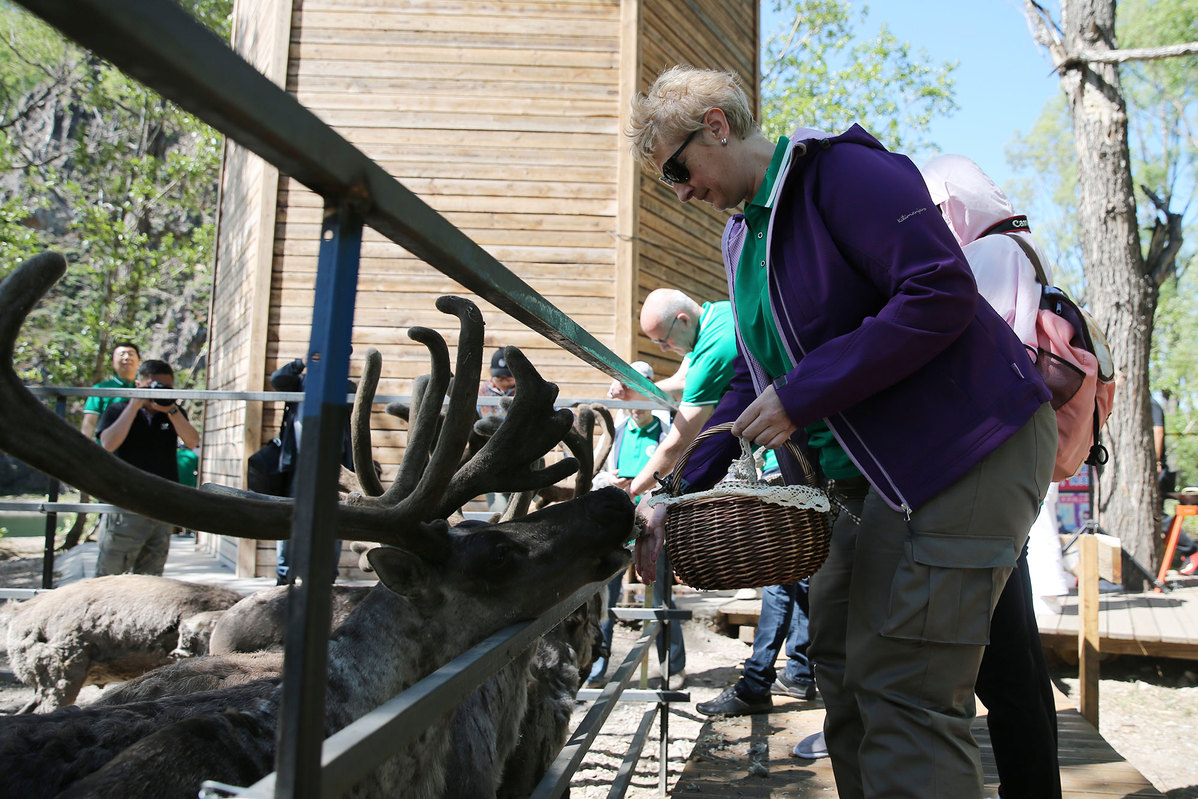
Diplomats and representatives from international organizations feed elks at Ergun National Wetland Park in the Inner Mongolia autonomous region on Thursday. (Photo: China Daily)
Foreign diplomats have urged China to promote its wetlands and nature parks to more international tourists and educate them on what is being done to protect forests and grasslands.
They made the remarks on Friday after paying a five-day visit to Hulunbuir city in the Inner Mongolia autonomous region.
"Over the last few days, I have seen your great work on wetland protection, management of natural reserves and development of forestry," said Manasa Tagicakibau, Fiji's ambassador to China.
"I was thinking China must have invested a lot in protection. So in order to get the return, my suggestion is that areas like Inner Mongolia should entice more international tourists to come."
Vitaly Fadeev, a senior counselor from the Russian embassy in China, said that Russia and China had enjoyed close ecological cooperation, and he hoped more was to come.
"Inner Mongolia has done a good job in ecology. I hope that these green areas are used to educate children to cherish and protect the environment. In addition to Chinese children, China can consider inviting Russian children to observe nature together," he said.
Sixteen foreign representatives from Fiji, Vietnam, Russia, Germany, Kazakhstan, Pakistan, Slovenia, Kenya, Uruguay and Montenegro took part in this visit.
Meng Xianlin, director-general of the department of international cooperation of the National Forestry and Grassland Administration, said the visit aimed to attract more international friends to learn about China's forests and grasslands.
"Through this visit, we aim to demonstrate practices of forestry and grassland ecological protection and restoration in China and share our experiences and models in ecological construction, and promote international cooperation and exchanges. We are glad to receive suggestions from diplomats and representatives across the world," Meng said.
The forest coverage rate in Inner Mongolia has increased over the past 70 years from 7.7 percent to 22.1 percent by March. The coverage of grasslands has increased from less than 30 percent in the early 2000s to 44 percent, according to the region's forestry bureau.
Lou Bojun, deputy head of the region's forestry and grassland bureau, said Inner Mongolia is the largest and most comprehensive ecological area in northern China.
"However, it has also been one of the provincial-level regions with the most concentrated desertification land, the most serious sand damage and the most fragile ecological environment. Since 2001, we have tried and achieved forestry upgrades of 667,000 hectares annually on average and planted more than 60 million trees," he said.
According to Meng, this was the third such visit by diplomats. In 2017, the administration organized diplomatic envoys and representatives of international organizations to visit the Hexi Corridor in Gansu province to learn about the sand control work. Last year, another group visited Shanxi province to see the construction of the Three-North Shelter Forest Program, which was launched in 1978 to plant trees in northern China.


